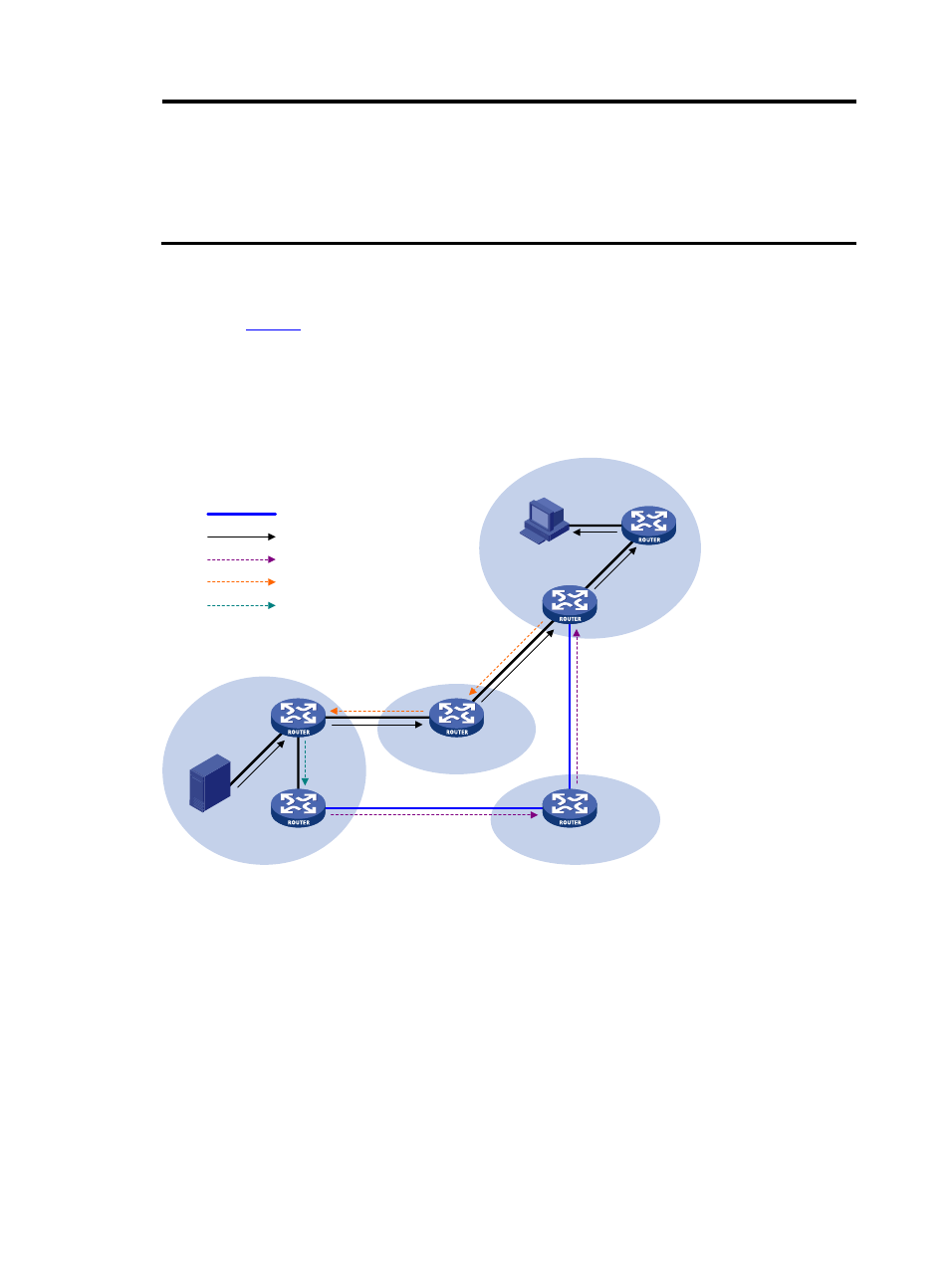H3C Technologies H3C SecPath F1000-E User Manual
Page 64

3
NOTE:
In a PIM-SM network running the BSR mechanism, the RP is dynamically elected from C-RPs. To
enhance network robustness, a PIM-SM network typically has more than one C-RP. As the RP
election result is unpredictable, MSDP peering relationships should be built among all C-RPs so that
the winner C-RP is always on the "MSDP interconnection map”, while loser C-RPs will assume the
role of common PIM-SM routers on the “MSDP interconnection map”.
Implementing inter-domain multicast delivery by leveraging MSDP peers
As shown in
, an active source (Source) exists in the domain PIM-SM 1, and RP 1 has learned the
existence of Source through multicast source registration. If RPs in PIM-SM 2 and PIM-SM 3 also wish to
know the specific location of Source so that receiver hosts can receive multicast traffic originated from it,
MSDP peering relationships should be established between RP 1 and RP 3 and between RP 3 and RP 2
respectively.
Figure 2 MSDP peering relationships
RP 1
DR 1
Source
PIM-SM 1
PIM-SM 3
PIM-SM 2
PIM-SM 4
RP 3
RP 2
DR 2
MSDP peers
SA message
Join message
Multicast packets
Register message
Receiver
The process of implementing inter-domain multicast delivery by leveraging MSDP peers is as follows:
1.
When the multicast source in PIM-SM 1 sends the first multicast packet to multicast group G, DR 1
encapsulates the multicast data within a register message and sends the register message to RP 1.
Then, RP 1 gets aware of the information related to the multicast source.
2.
As the source-side RP, RP 1 creates SA messages and periodically sends the SA messages to its
MSDP peer. An SA message contains the source address (S), the multicast group address (G), and
the address of the RP which has created this SA message (namely RP 1).
3.
On MSDP peers, each SA message is subject to a reverse path forwarding (RPF) check and
multicast policy–based filtering, so that only SA messages that have arrived along the correct path
and passed the filtering are received and forwarded. This avoids delivery loops of SA messages.
In addition, you can configure MSDP peers into an MSDP mesh group so as to avoid flooding of
SA messages between MSDP peers.
